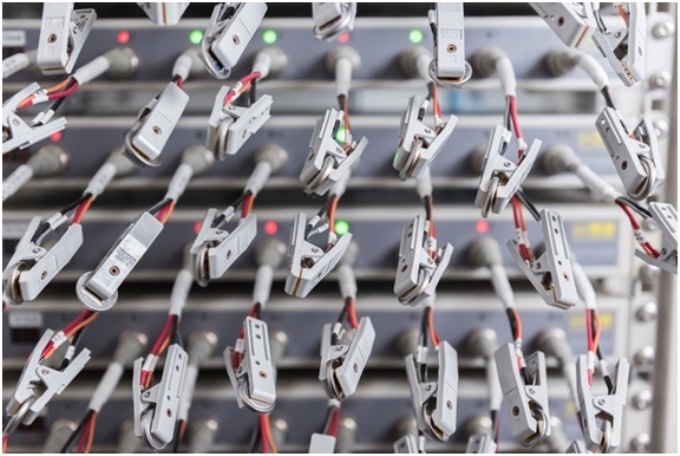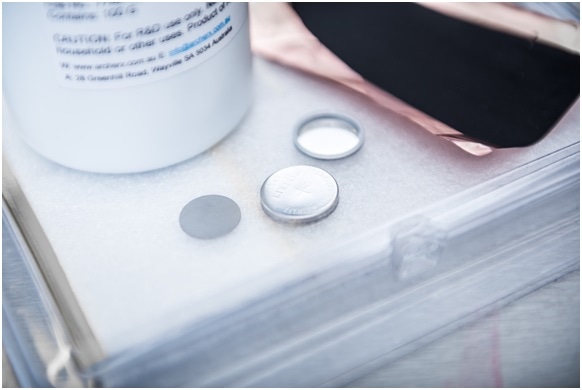Aug 22 2018
Full-cell lithium-ion batteries that are functional and commercially scalable have been successfully assembled and validated for performance, with Archer Exploration Limited’s Campoona graphite at the anode and commercially equivalent materials and chemistries used in the cathode.
 Coin-cell batteries assembled with full-cell configurations incorporating Archer Campoona graphite anodes and the commercially relevant cathode chemistries NMC, LFP, and LCO. The clips holding the coin-cells measure the charge and discharge properties of the battery to validate performance.
Coin-cell batteries assembled with full-cell configurations incorporating Archer Campoona graphite anodes and the commercially relevant cathode chemistries NMC, LFP, and LCO. The clips holding the coin-cells measure the charge and discharge properties of the battery to validate performance.
Archer’s collaboration agreement with The University of New South Wales (UNSW) led to the development of full-cell lithium-ion batteries, marking suitability for use in electric vehicle and consumer electronic markets with batteries created using three commonly used cathode variants: lithium-nickel-manganese-cobalt (NMC), lithium-iron phosphate (LFP), and lithium-cobalt oxide (LCO).
Commenting on the work, Archer CEO Dr Mohammad Choucair said: “The speed in which we are able to deliver such exceptional outcomes is testament to the strong technical leadership and culture of excellence at Archer. Collaboration with UNSW has greatly accelerated our advance in the battery space. We are now able to demonstrate complete, functioning, and commercially relevant batteries with Archer’s graphite. We have reached a major milestone towards integrating our substantial graphite resource in the lithium-ion battery supply chain.”
Archer’s 99% acid-leached graphite from Campoona was used with no further optimisation. The NMC and LCO cathode chemistries were prepared at UNSW, while the LFP cathode materials used were commercially sourced. All synthesis, fabrication, characterisation and testing was carried out at UNSW. Key battery performance parameters, including specific capacity and cycle stability, were in-line with industry state-of-art values, owing in-part to the exceptional structural and chemical properties of Archer’s Campoona graphite.

Coin-cell battery assembly used for the full-cell configurations incorporating Archer Campoona graphite and the commercially relevant cathode chemistries
“It is important that we formulated, built, and tested full-cell batteries using Campoona graphite using different cathode chemistries, as there is no one industry standard cathode for lithium-ion batteries, with different manufacturers using different chemistries. The work definitively shows that Archer’s graphite can be used in conjunction with different types of cathodes, making it suitable for multiple potential battery markets,” concluded Dr Choucair.
With the global lithium-ion battery market forecast to grow over the next 10 years to US$130 billion, the outcomes of the innovative work will be used by Archer to target potential offtake partners in the lithium-ion battery supply chain and electric vehicle markets.
Recent forecasts from the Bloomberg New Energy Finance Report shows sales of EVs increasing from a record 1.1 million worldwide in 2017, to 11 million in 2025 and then to 30 million in 2030, with Archer expected to remain at the forefront of developments in the advanced materials industry.
The next steps for Archer will be focusing on addressing the trade-off between cost and battery performance, building off this scalable proof-of-production, as they continue to target partnerships with lithium ion battery manufacturers to scale and integrate Campoona graphite further downstream in the supply chain which would require thousands of tonnes of graphite Archer has access to through a mining lease granted in December 2017.